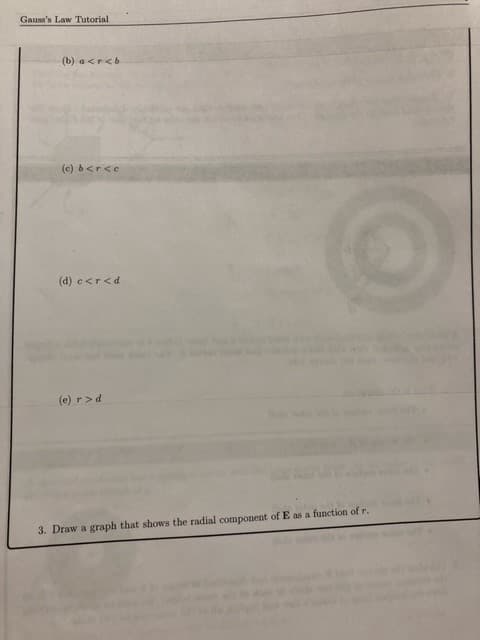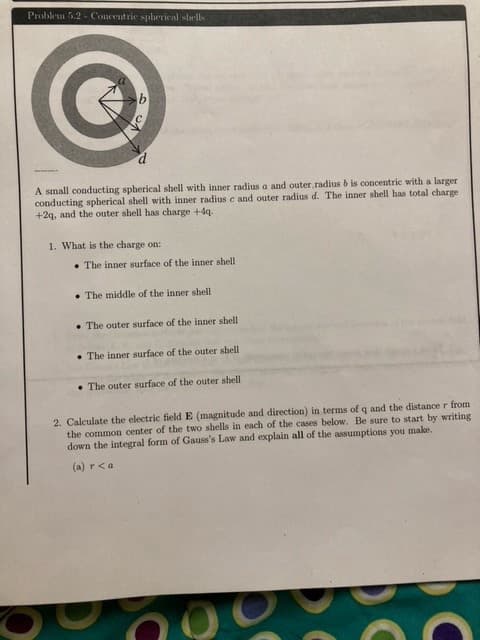b d A small conducting spherical shell with inner radius a and outer radius b is concentric with a larger conducting spherical shell with inner radius c and outer radius d. The inner shell has total charge +2q, and the outer shell has charge +4q. 1. What is the charge on: The inner surface of the inner shell The middle of the inner shell The outer surface of the inner shell The inner surface of the outer shell The outer surface of the outer shell
b d A small conducting spherical shell with inner radius a and outer radius b is concentric with a larger conducting spherical shell with inner radius c and outer radius d. The inner shell has total charge +2q, and the outer shell has charge +4q. 1. What is the charge on: The inner surface of the inner shell The middle of the inner shell The outer surface of the inner shell The inner surface of the outer shell The outer surface of the outer shell
Related questions
Question

Transcribed Image Text:Gauss's Law Tutorial
(b) a<r<b
(c) b<r<c
(d) c<r<d
(e) r>d
3. Draw a graph that shows the radial component of E as a function of r.

Transcribed Image Text:Problem 5.2 Concentric spherical shells
d
A small conducting spherical shell with inner radius a and outer radius b is concentric with a larger
conducting spherical shell with inner radius c and outer radius d. The inner shell has total charge
+2q, and the outer shell has charge +4q.
1. What is the charge on:
The inner surface of the inner shell
The middle of the inner shell
The outer surface of the inner shell
The inner surface of the outer shell
The outer surface of the outer shell
2. Calculate the electric field E (magnitude and direction) in terms of q and the distance r from
the common center of the two shells in each of the cases below. Be sure to start by writing
down the integral form of Gauss's Law and explain all of the assumptions you make.
(a) r <a
Expert Solution
This question has been solved!
Explore an expertly crafted, step-by-step solution for a thorough understanding of key concepts.
Step by step
Solved in 3 steps
